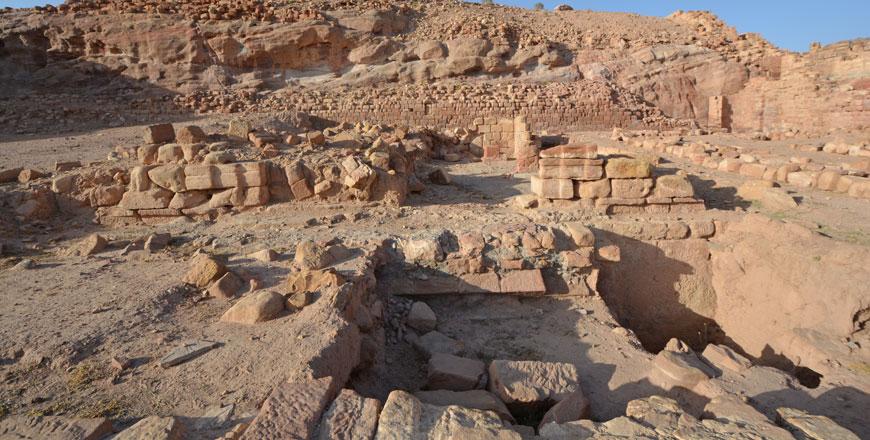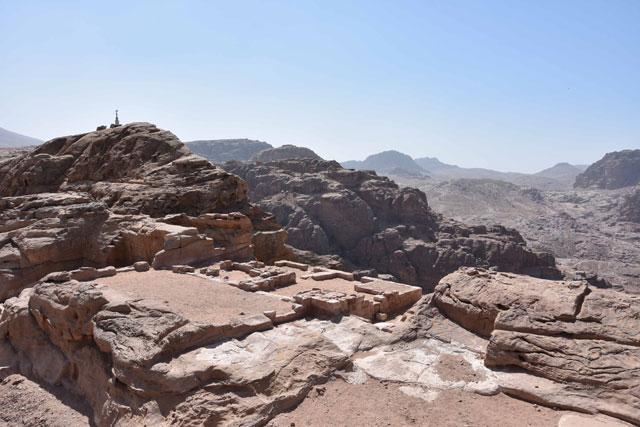You are here
American archaeologist tracks ups and downs of Petra’s monumental compound
By Saeb Rawashdeh - Oct 17,2023 - Last updated at Oct 18,2023

A view of the Petra Garden and Pool Complex in the summer of 2018 (Photo courtesy of PGPC)
AMMAN — The Petra Garden and Pool Complex (PGPC), which can be dated to the 1st century BC, had been a part of the monumental compound known as the Great Temple, noted an American archaeologist.
“The place was associated with a large pool which was probably accessible through the courtyard,” said Sara Wenner Maximiuk from University of Cincinnati, who spent 10 years working at PGPC as well as other projects in Petra, including the Petra Northern Ridge project.
WennerMaximiuk’s interests are ceramics, urbanism and archaeological survey.
The PGPC was very significant because it was an area of Petra that was very dynamic and full of life, with a number of significant important temples and villas of rich and prominent citizens, WennerMaximiuk said, adding that on the North Ridge there were more houses.
“It was a vibrant and thriving area, a mix of domestic and religious life in 1st century BC and 1st century AD,” the archaeologist said.
The PGPC was a place for the elite and therefore the complex was not open for the general public, according to Wenner Maximiuk.
After the Roman annexation of the Nabataean Kingdom in 106 AD, changes occurred across Petra and the PGPC underwent a renovation with new aspects added to the garden, she said, noting that in the 3rd century AD, PGPC became a place for depositing refuse.
“They could dump any byproduct of industry at that place,”Wenner Maximiuk said, noting that it was a dramatic shift from an elite pleasure garden into an industrial, utilitarian place.
Although very arid, Petra had a sufficient supply of water due to Nabataean engineering knowledge, and the team of archaeologists still try to understand how the garden was watered.
“We started to trace remains of the piping system from the Great Temple to the garden. There are numerous cisterns and water storage locations across Petra and Nabataeans used plants that didn’t require so much water,” according to Wenner Maximiuk, who became assistant director of the Petra Garden and Pool Complex project.
There are four ancient villas behind the garden-pool complex and they need more excavation and work to determine the date of their building and functions, she said, adding that her team plans to come back in 2025.
“We still try to figure out who had the access to the garden because that complex wasn’t completely a private space, but also it wasn’t accessible for the general public,” Wenner Maximiuk concluded.
Related Articles
AMMAN — After excavation of the Petra Church, a group of researchers worked on two churches on the higher slope — the Ridge Church and the B
AMMAN — In the heart of the ancient Petra, a preliminary survey and excavation of the "Lower Market" in 1998 disclosed a monumental swimming
AMMAN — Until now, very little was known about public baths in Petra, according to a French architect affiliated with Ifpo who developed a r














